by Pam Adler
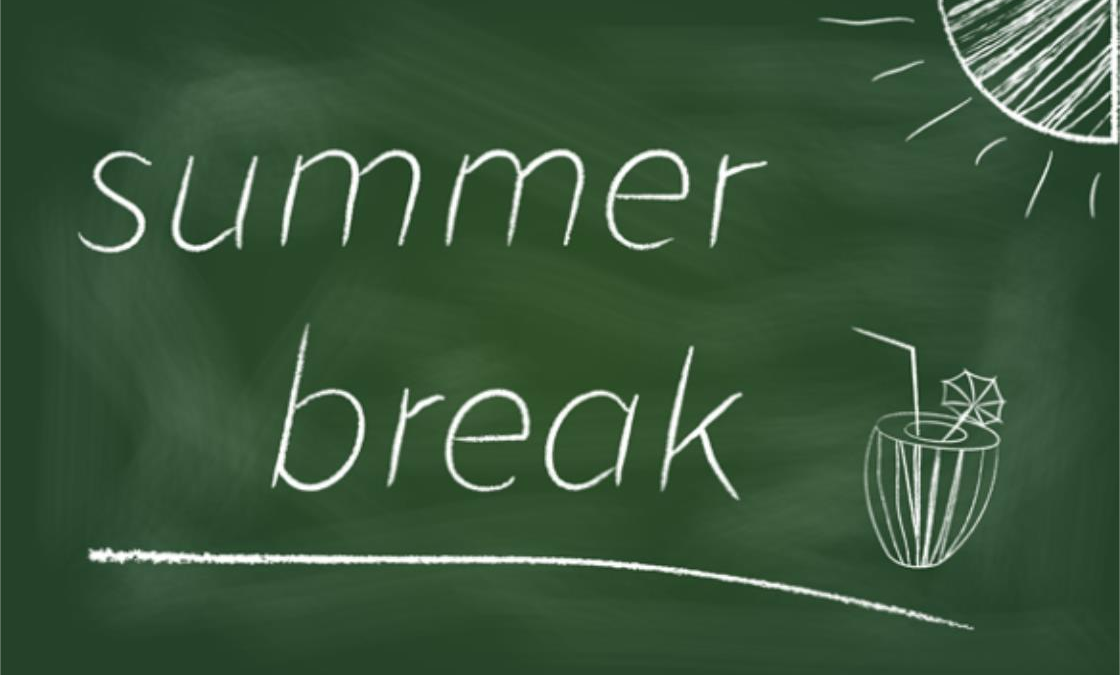
The UCBA College Library will have the following hours during summer break Continue reading

by Pam Adler

The UCBA College Library will have the following hours during summer break Continue reading
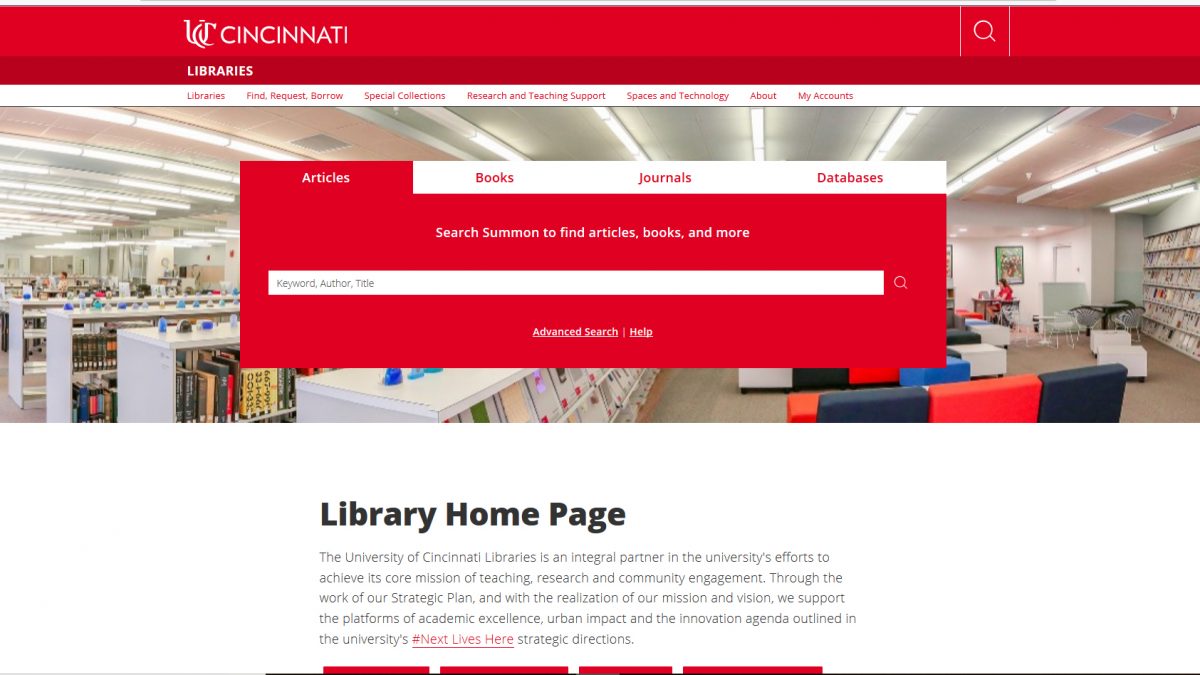
Check out the redesigned Libraries website scheduled to launch Thursday, Aug. 15.
Some of the new features and upgrades of the UC Libraries website redesign include:
Included in the redesign are all college and departmental (C&D) library web pages from the Archives to Rare Books Library to the Henry R. Winkler Center for the History of the Health Professions, as well as the Clermont College Library and UC Blue Ash College Library web pages.
While the starting web address of the site remains the same – www.libraries.uc.edu, the navigation and content within the site has changed, so update any links or bookmarks you may have to the site. And while great care was taken to be accurate, if broken links or missing content are discovered, contact Team Dynamix.
By: Savannah Gulick, Archives & Rare Books Library Student Assistant
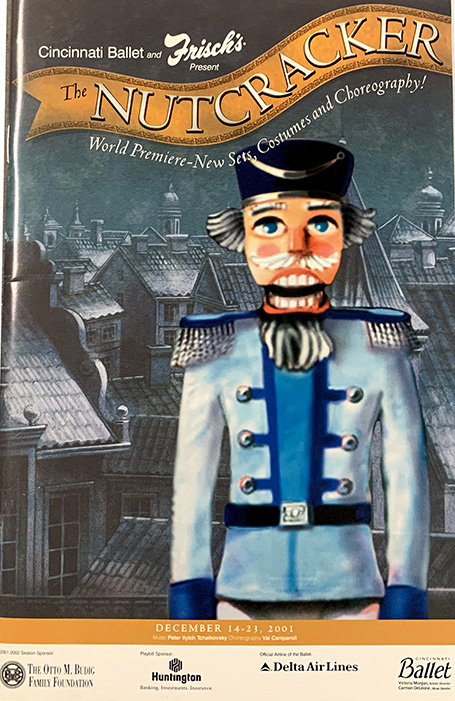 If you have lived around Cincinnati, most likely you’ve heard of Cincinnati Ballet, more specifically Cincinnati Ballet’s annual Nutcracker performance at Music Hall. Every holiday season, the ballet company performs this classic and it truly is a breathtaking. However, there is so much more to the company than just the Nutcracker! For example, when it was founded in 1958, Cincinnati Ballet became the first ever company to exist west of the Alleghenies. It is a fascinating history of this local cultural institution and our holdings of its archive includes a wealth of photos of their productions as well as costume designs and choreography. This most recent accession includes programs for Carmen, The Nutcracker, The Come Together festival, and Swan Lake; costume sketches, choreography, and pieces for Swan Lake and the Nutcracker. The Archives & Rare Books Library holds the ballet’s records extending from 1960 to 2017. and this recent acquisition, accession number US-19-03, consists of 8.75 linear feet and covers 1991 to 2017. Earlier acquisitions in 2010, 2012, and 2016 have the accession numbers of US-10-03 and US-12-07, and US-16-02 and overall the collection consists of 40.32 linear feet of documents, posters,
If you have lived around Cincinnati, most likely you’ve heard of Cincinnati Ballet, more specifically Cincinnati Ballet’s annual Nutcracker performance at Music Hall. Every holiday season, the ballet company performs this classic and it truly is a breathtaking. However, there is so much more to the company than just the Nutcracker! For example, when it was founded in 1958, Cincinnati Ballet became the first ever company to exist west of the Alleghenies. It is a fascinating history of this local cultural institution and our holdings of its archive includes a wealth of photos of their productions as well as costume designs and choreography. This most recent accession includes programs for Carmen, The Nutcracker, The Come Together festival, and Swan Lake; costume sketches, choreography, and pieces for Swan Lake and the Nutcracker. The Archives & Rare Books Library holds the ballet’s records extending from 1960 to 2017. and this recent acquisition, accession number US-19-03, consists of 8.75 linear feet and covers 1991 to 2017. Earlier acquisitions in 2010, 2012, and 2016 have the accession numbers of US-10-03 and US-12-07, and US-16-02 and overall the collection consists of 40.32 linear feet of documents, posters, 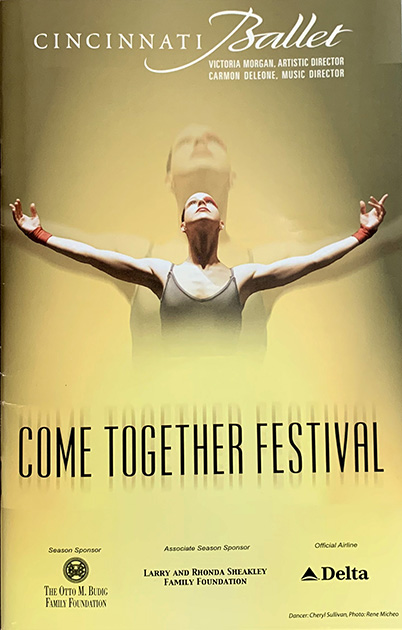 photographs, and programs. The finding aids for the earlier accessions, with details on the contents, can be found online on the UC Libraries Finding Aid website. ARB’s Suzanne Reller has been the contact person for the ballet and she assisted local arts writer David Lyman in his 2013 commemorative history, Cincinnati Ballet Celebrates 50: 1963-2013, from which many of following facts have been taken. The volume is available in ARB’s reference collection and has the call number of GV1786.C5 C55 2013.
photographs, and programs. The finding aids for the earlier accessions, with details on the contents, can be found online on the UC Libraries Finding Aid website. ARB’s Suzanne Reller has been the contact person for the ballet and she assisted local arts writer David Lyman in his 2013 commemorative history, Cincinnati Ballet Celebrates 50: 1963-2013, from which many of following facts have been taken. The volume is available in ARB’s reference collection and has the call number of GV1786.C5 C55 2013.

Dr. Lisa Federer, PhD, MLIS
Join UC Libraries and IT@UC for a lecture on the reuse of biomedical research data and a workshop on data visualization in R.
On September 17th, Dr. Lisa Federer, Data and Open Science Librarian for the National Library of Medicine, will visit UC as part of our Data and Computational Science Series (DCS2).
The DCS2 planning committee cordially invites you to attend Dr. Federer’s lecture, luncheon and workshop.
Lecture and Luncheon:
If You Share It, Will They Come? Quantifying and Characterizing Reuse of Biomedical Research Data
Tuesday, September 17, 2019 11:00 AM to 1:00 PM
Henry R. Winkler Center for the History of the Health Professions, Stanley J. Lucas, MD Board Room.
Workshop:
Endless Forms Most Beautiful: Creating Customized Data Visualization with ggplot2 in R
Tuesday, September 17, 2019 1:30 PM to 3:30 PM
Donald C. Harrison Health Sciences Library, Dr. Stanley B. Troup Learning Space.
These events are free and open to all. Registration is required.
Register for the Lecture and Luncheon. Register for the Workshop.
Please be sure to log into the Faculty Development OneStop website to complete your registration.
Registration also permitted via phone and email | (513) 558-0725 | Don.Jason@uc.edu
These events are funded through a universal provider grant awarded by the Provost Office.
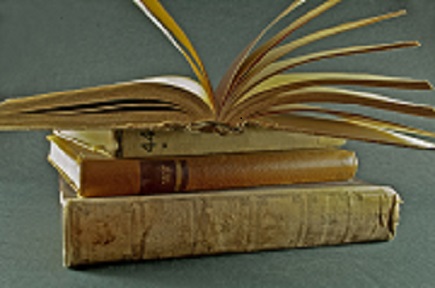 Six new acquisitions have been added to the Oesper collection. Click here to see what those books are in the May-June 2019 list.
Six new acquisitions have been added to the Oesper collection. Click here to see what those books are in the May-June 2019 list.
For more information about Oesper and the apparatus museum, click here.
If you have any questions about this collection, contact Ted Baldwin, Director of Science and Engineering Libraries, at Ted.Baldwin@uc.edu.
Check out the new science books that have been added to the Geology-Math-Physics and Langsam Libraries.
the new science books that have been added to the Geology-Math-Physics and Langsam Libraries.
Click here to access the May-June 2019 list.
If you have any questions about these books, contact Ted Baldwin, Director of Science and Engineering Libraries, at Ted.Baldwin@uc.edu.

Xuemao Wang
Executive Vice President for Academic Affairs and Provost Kristi A. Nelson announced that Dean and University Librarian Xuemao Wang will take on the additional title and responsibilities of vice provost of digital scholarship.
The new title reflects both the university’s commitment to digital scholarship as well as Wang’s extensive expertise in the subject. As dean and university librarian, he has led UC Libraries in the formation of the Digital Scholarship Center (DSC), the creation of the university’s digital repository, Scholar@UC, along with the development of new digital publishing capacities with the University of Cincinnati Press, the establishment of new services offered through research and data management and he partnered with three colleges to form the Digital Media Collaborative (DMC).
“Xuemao’s broad expertise in digital scholarship and strategic-thinking approach that has developed UC Libraries into an intellectual commons will be a tremendous asset in advancing UC’s dynamic data, information and resource offerings as we implement the Innovation Agenda outlined in Next Lives Here,” said Nelson.
This additional role of vice provost of digital scholarship will cover a broad spectrum of areas including the DSC, Scholar@UC, the DMC and research and data management, but also digital archives and preservation, digital records and assets management, scholarly communication and digital publishing, as well as the rapidly evolving movements of open science, open education resources, open data and open access.
Wang, who joined the University of Cincinnati in 2012, will continue to provide leadership of UC Libraries as the dean, which includes the Walter C. Langsam Library, the Donald C. Harrison Health Sciences Library and Henry R. Winkler Center for the History of the Health Professions, the Archives and Rare Books Library and seven college and departmental libraries. The Libraries’ strategic plan, created under the leadership of Wang, has as its vision to transform UC Libraries into “the globally engaged, intellectual commons of the university — positioning ourselves as the hub of collaboration, digital innovation and scholarly endeavor on campus.”
“I am honored and thrilled to take on this new responsibility for the university. My additional role in leading university wide digital scholarship efforts will allow me to contribute at a new level in supporting the advancement of UC’s Next Lives Here strategic direction,” said Wang. “I plan to capitalize on the experience, resources and the catalyst role of the Libraries, as well as the extraordinary expertise of library faculty and staff, to facilitate university wide digital scholarship integration.”
With a career that spans international, public, library consortium and academic library worlds, Wang came to UC from Emory University where he was the associate vice provost of University Libraries. Prior to that, he worked at Johns Hopkins University, Sheridan Libraries, the Metropolitan New York Library Council, Borough Public Library, as well as spent numerous years gaining academic librarian experience in China. He has a strong research interest and background in global librarianship and digital scholarship, publishing and consulting internationally. Wang currently chairs the OhioLINK special task force on the future of the digital library system, is chair of the Innovation Lab Working Group of the Association of Research Libraries, and chair of the Digital Humanities/Digital Scholarship Special Interest Group of the International Federation of Library Associations and Institutions.
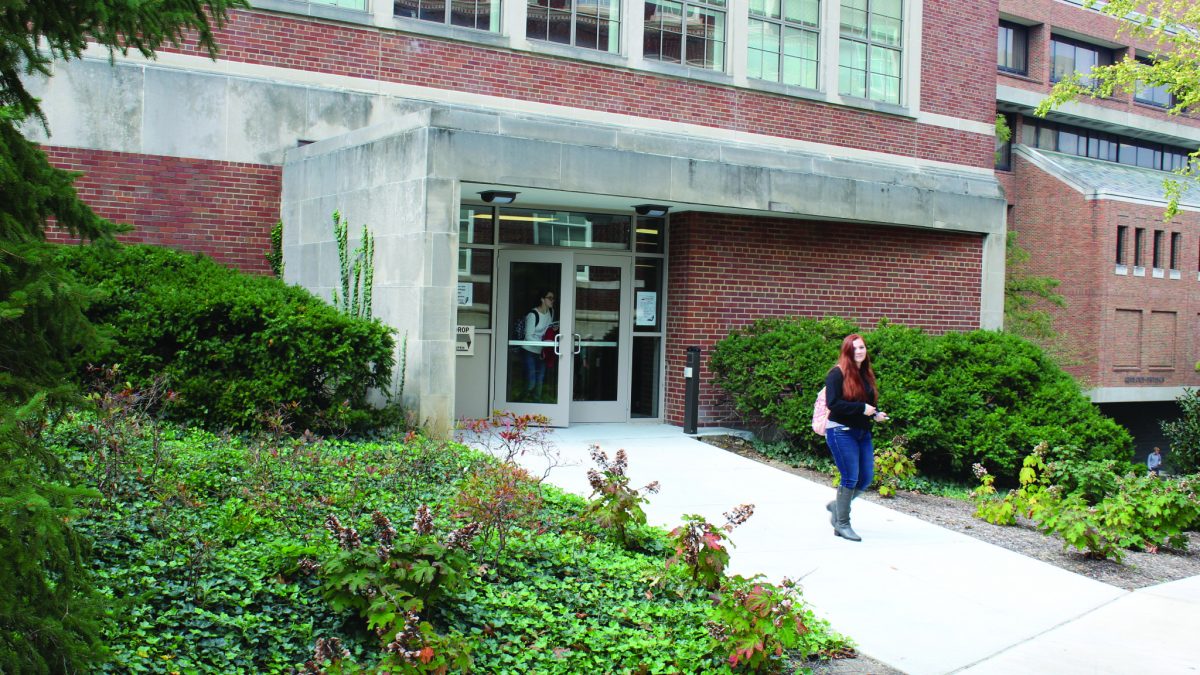 Starting July 13, the Geology-Mathematics-Physics Library is closed both Saturdays and Sundays for the remainder of the summer semester. Fall semester begins Monday, August 26.
Starting July 13, the Geology-Mathematics-Physics Library is closed both Saturdays and Sundays for the remainder of the summer semester. Fall semester begins Monday, August 26.
For those seeking a library on the weekend, nearby College of Engineering and Applied Science Library, the Walter C. Langsam Library, and the Robert A. Deshon and Karl J. Schlachter Library for Design, Architecture, Art and Planning (DAAP) all have weekend hours.
A list of all library hours is available online at https://libraries.uc.edu/about/hours.html.
